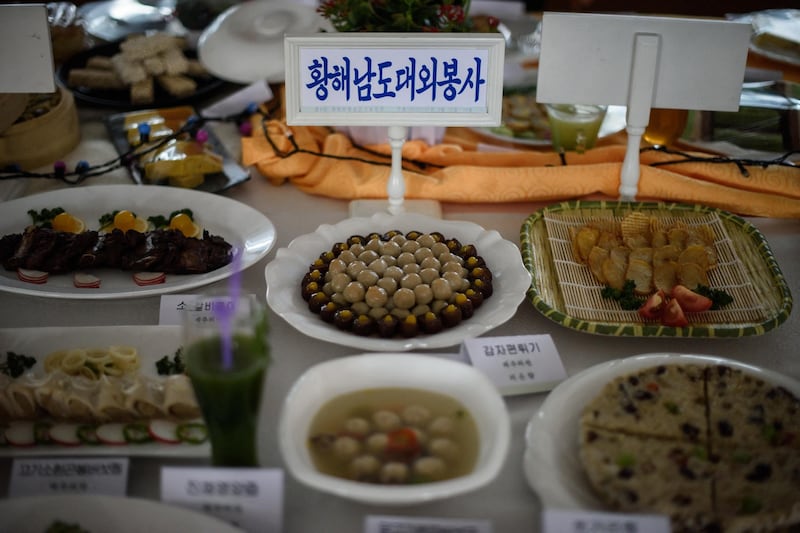Snacks made from potatoes – from doughnuts to noodles – are all the rage in North Korea this year due to a bumper crop that led to a plunge in the price of potato starch and potato flour, residents in the country told Radio Free Asia.
It was the best crop in the past 10 years, residents said, an encouraging sign in a country that suffers from chronic food shortages.
A resident in the northern province of Ryanggang said that two factories in the province, the Samjiyon Potato Farina Production Factory and the Taehongdan Potato Processing Factory, were doing brisk business.
“This year, potato farming went well, greatly increasing the production at these two factories,” he said.
Though the Samjiyon factory had been in operation since 2017, many of the products it produced were not available in the marketplace, or were too expensive, the resident said.
“As the potato crop is going well this year and Samjiyon residents received potato powder and potato-fortified rice as rations in November and December, [many of those products] are in the marketplace as well,” he said.

The potato crop was up from an average of 27 tons per jongbo (2.5 acres) to 32 tons per jongbo, according to the source, but although the two factories are bustling right now, the increased activity might not be sustainable, the resident said.
“Since the weather suitable for potato farming is rare, … it is difficult to expect production to normalize [at the two factories] in the future,” he said. “Currently, processed potato products are replacing corn in the marketplace, but it will be difficult to [expect] this to continue in the future.”
Cheaper than corn and wheat
Raw potatoes sold in the Hyesan market cost about 1,000 won, or about 5 U.S. cents, per kilogram (2.2 pounds). Corn is twice as much.
People are noticing that potato-based products from the two factories are replacing corn-based products at the marketplace, another resident said.
“[Corn] was the main food of the common people,” the second resident said. “Food made and sold at markets these days is made from processed potato products.”
The potato products are also cheaper than wheat-based products, so people like that they can buy larger quantities of potato-based food for less than it would cost if it were wheat or corn-based.
The most popular products made in the Samjiyon factory that are for sale in the Hyesan marketplace right now are potato flour, potato noodles, potato kkwabaegi, a type of twisted doughnut, and potato starch, he said. People are also making potato-fortified rice to sell in the marketplace.
“Potato flour, the main product of the Samjiyon Potato Farina Production Factory, is made by thinly slicing potatoes, drying them and grinding them into powder,” he said.
“It can replace all foods that can be made with wheat flour,” he said. “The price is much cheaper than wheat flour, but the taste is just as good, so it is popular among ordinary people.”
“[Potato products] are considered good to fill the stomachs of the common people,” he said.
Translated by Leejin J. Chung. Edited by Eugene Whong and Malcolm Foster.
